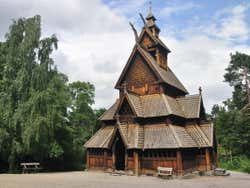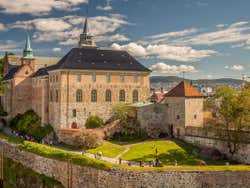
History of Oslo
Oslo's roots are intrinsically linked with Viking culture. Learn about the exciting history of a city that has starred in wars, Arctic explorations and huge maritime advances.
Oslo's history stretches from its founding in the 11th century to the present day. Its name derives from early Norse and means "The Hill of the Gods". Throughout history, the capital has also been known as "The City of Tigers", due to its cold and hostile climate.
Founding and origin of Oslo: the Viking Age
The Vikings plied the Scandinavian waters from 800 AD until the beginning of the 11th century. During this long period, they were the stars of bloody battles on the open sea, conquests and explorations in the Nordic lands.
In addition, the Viking Age was a period of important advances in the construction of wooden and metal ships. Their settlement in Norway was quite sporadic until the end of the 11th century when the first port towns began to emerge.
This was the case in Oslo, where ship scraps and funerary decorations have been found dating back to 1000 AD. All these findings can be found in the Historical Museum and the Viking Ship Museum.
The Medieval period: Christiania
In 1314, the Norwegian King Haakon V made Oslo the capital of the kingdom and began to build Akershus Castle. Because of this, Oslo gained importance compared to the most important cities up to that time: Bergen and Trondheim.
However, the union of the kingdoms of Denmark and Norway in 1536 resulted in Oslo losing its capital status for 3 centuries.
During the medieval period, Oslo survived several fires until 1624, when a devastating fire completely destroyed the city. King Christian IV decided to move the capital to the vicinity of Akershus and renamed it Christiania, a name that remained until 1925.
The first Polar explorations
The cold has never frightened the Norwegians, who have been pioneers in Arctic expeditions and the construction of ships resistant to polar conditions. Thanks to numerous explorers from Oslo, it has been possible to make important scientific and cartographic advances in the Arctic.
In 1893, two Norwegians led the first expedition to the North Pole aboard the ship Fram, which remains on display in the Fram Museum. Fridtjof Nansen and Otto Sverdrup captained this unprecedented polar expedition.
The Fram managed to cross the Arctic Ocean, but it wasn't until its next expeditions years later that it approached the North Pole.
Roald Amundsen achieved an even more enviable feat: he managed to sail from the Arctic Ocean to the South Pole in a single voyage. Amundsen was also the first to fly over the North Pole. You'll find tributes to his name all over Oslo.
Oslo in the 20th century
Oslo's 20th century was primarily shaped by the Nazi occupation of Norway in 1940. For 5 years, Hitler established tight control over exports of Norwegian timber, fish and other products for the benefit of the regime.
After the liberation of Norway in 1945, the country recovered quickly and in 1952, the Winter Olympics were held in Oslo. The Holmenkollen ski jumping track is a clear example of this great event.
Norway is currently a member of the Schengen area, but not of the European Union. The state is governed by a constitutional monarchy and the residence of King Harald V's family is the Royal Palace in Oslo.


